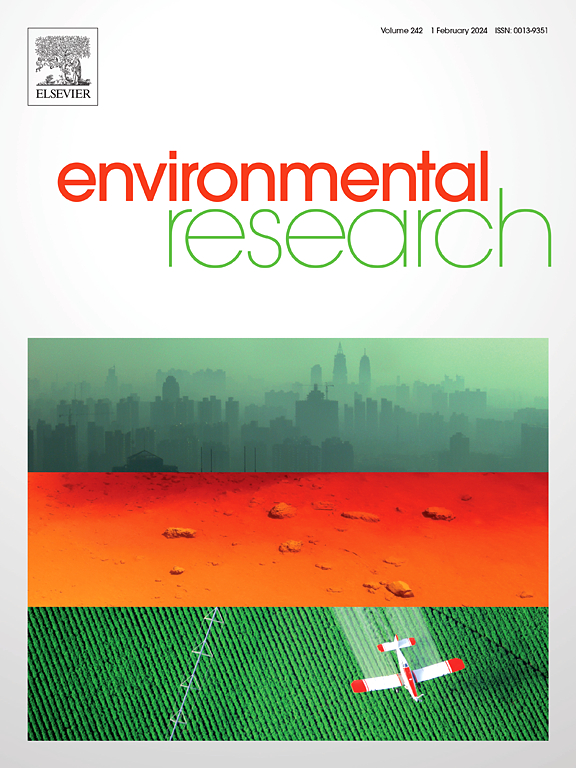Comparative analysis of species-specific dissolved gaseous mercury oxidation in phytoplankton cultures
IF 7.7
2区 环境科学与生态学
Q1 ENVIRONMENTAL SCIENCES
引用次数: 0
Abstract
Phytoplankton species influence mercury cycling through bioaccumulation and Hg(II) reduction, however their contribution to oxidation of Hg(0) in aquatic systems remains largely overlooked. The present study aims at investigating the oxidation of Hg(0) by two phytoplankton species: the diatom Cyclotella meneghiniana and the green alga Chlamydomonas reinhardtii. The algae were exposed to gaseous Hg(0) at concentrations in the range of 6–12 μg m−3, representative for contaminated environments, under various experimental conditions (open vs. closed systems, light vs dark, and alive vs dead cells).
The obtained results revealed, for a first time, that Hg(0) oxidation in C. meneghiniana cultures was light-dependent and limited to live cells, whereas C. reinhardtii maintained similar oxidation rates in both live and dead cells. C. reinhardtii cultures exhibited nearly tenfold higher Hg(0) oxidation efficiency than C. meneghiniana, demonstrating a strong species-dependent effect. Both species facilitated Hg(0) uptake from air into water, demonstrating a potential route for atmospheric Hg(0) to enter aquatic food webs. This novel evidence of phytoplankton-mediated Hg(0) oxidation highlights the importance of species identity and environmental conditions in governing Hg transformations and bioavailability. The results could have significant implications for understanding mercury bioaccumulation and toxicity in aquatic ecosystems. Further research is needed to clarify their contribution to Hg(0) oxidation in aquatic systems and to elucidate the underlying mechanisms driving the process.

浮游植物培养物中物种特异性溶解气态汞氧化的比较分析
浮游植物物种通过生物积累和Hg(II)还原影响汞循环,但它们对水生系统中Hg(0)氧化的贡献在很大程度上被忽视。本研究旨在研究两种浮游植物:硅藻环藻(Cyclotella meneghiniana)和绿藻(Chlamydomonas reinhardtii)对汞(0)的氧化作用。在各种实验条件下(开放与封闭系统,光照与黑暗,活细胞与死细胞),藻类暴露于浓度在6-12 μg m−3范围内的气态汞(0)中,代表污染环境。所获得的结果首次表明,C. meneghiniana培养物中的Hg(0)氧化是光依赖性的,并且仅限于活细胞,而C. reinhardtii在活细胞和死细胞中都保持相似的氧化速率。C. reinhardtii培养物的Hg(0)氧化效率比C. meneghiniana高近10倍,显示出强烈的物种依赖效应。这两个物种都促进了汞(0)从空气中进入水中的吸收,表明了大气中汞(0)进入水生食物网的潜在途径。这一浮游植物介导的汞(0)氧化的新证据强调了物种身份和环境条件在控制汞转化和生物利用度中的重要性。研究结果可能对理解汞在水生生态系统中的生物积累和毒性具有重要意义。需要进一步的研究来阐明它们对水生系统中汞(0)氧化的贡献,并阐明驱动这一过程的潜在机制。
本文章由计算机程序翻译,如有差异,请以英文原文为准。
求助全文
约1分钟内获得全文
求助全文
来源期刊

Environmental Research
环境科学-公共卫生、环境卫生与职业卫生
CiteScore
12.60
自引率
8.40%
发文量
2480
审稿时长
4.7 months
期刊介绍:
The Environmental Research journal presents a broad range of interdisciplinary research, focused on addressing worldwide environmental concerns and featuring innovative findings. Our publication strives to explore relevant anthropogenic issues across various environmental sectors, showcasing practical applications in real-life settings.
 求助内容:
求助内容: 应助结果提醒方式:
应助结果提醒方式:


